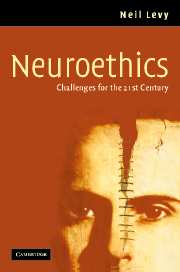Book contents
- Frontmatter
- Contents
- Preface
- Acknowledgements
- 1 Introduction
- 2 Changing our minds
- 3 The presumption against direct manipulation
- 4 Reading minds/controlling minds
- 5 The neuroethics of memory
- 6 The “self” of self-control
- 7 The neuroscience of free will
- 8 Self-deception: the normal and the pathological
- 9 The neuroscience of ethics
- References
- Index
6 - The “self” of self-control
Published online by Cambridge University Press: 16 December 2010
- Frontmatter
- Contents
- Preface
- Acknowledgements
- 1 Introduction
- 2 Changing our minds
- 3 The presumption against direct manipulation
- 4 Reading minds/controlling minds
- 5 The neuroethics of memory
- 6 The “self” of self-control
- 7 The neuroscience of free will
- 8 Self-deception: the normal and the pathological
- 9 The neuroscience of ethics
- References
- Index
Summary
What is the self? There is no single or simple answer to that question. The term, which is a term of art (as a freestanding noun, the word “self” is hardly ever used in ordinary English) is used in a range of sometimes conflicting ways; so many that some philosophers despair at finding any unifying element underlying its disparate uses and therefore recommend that we discontinue using it at all as the name for a philosophical problem (Olson 1999). I suspect that these philosophers are right to this extent: there is no single sense or even a closely related set of senses, unifying all or even most of the central uses of the term. There is therefore no problem of the self. Nevertheless, there are a number of problems of the self. In this chapter, we shall consider just one.
The problem of the self upon which I want to focus is, briefly, this: why is the self singular? This is not the first problem that generally comes to mind when we consider the problem of the self. However, it is a problem that is especially pressing for us. Consider the evidence from neuroscience, reviewed in earlier chapters, that the mind consists of a multitude of discrete modules and mechanisms. Consider, too, the extended mind hypothesis, according to which mind can include or incorporate a set of tools external to the self.
- Type
- Chapter
- Information
- NeuroethicsChallenges for the 21st Century, pp. 197 - 221Publisher: Cambridge University PressPrint publication year: 2007



